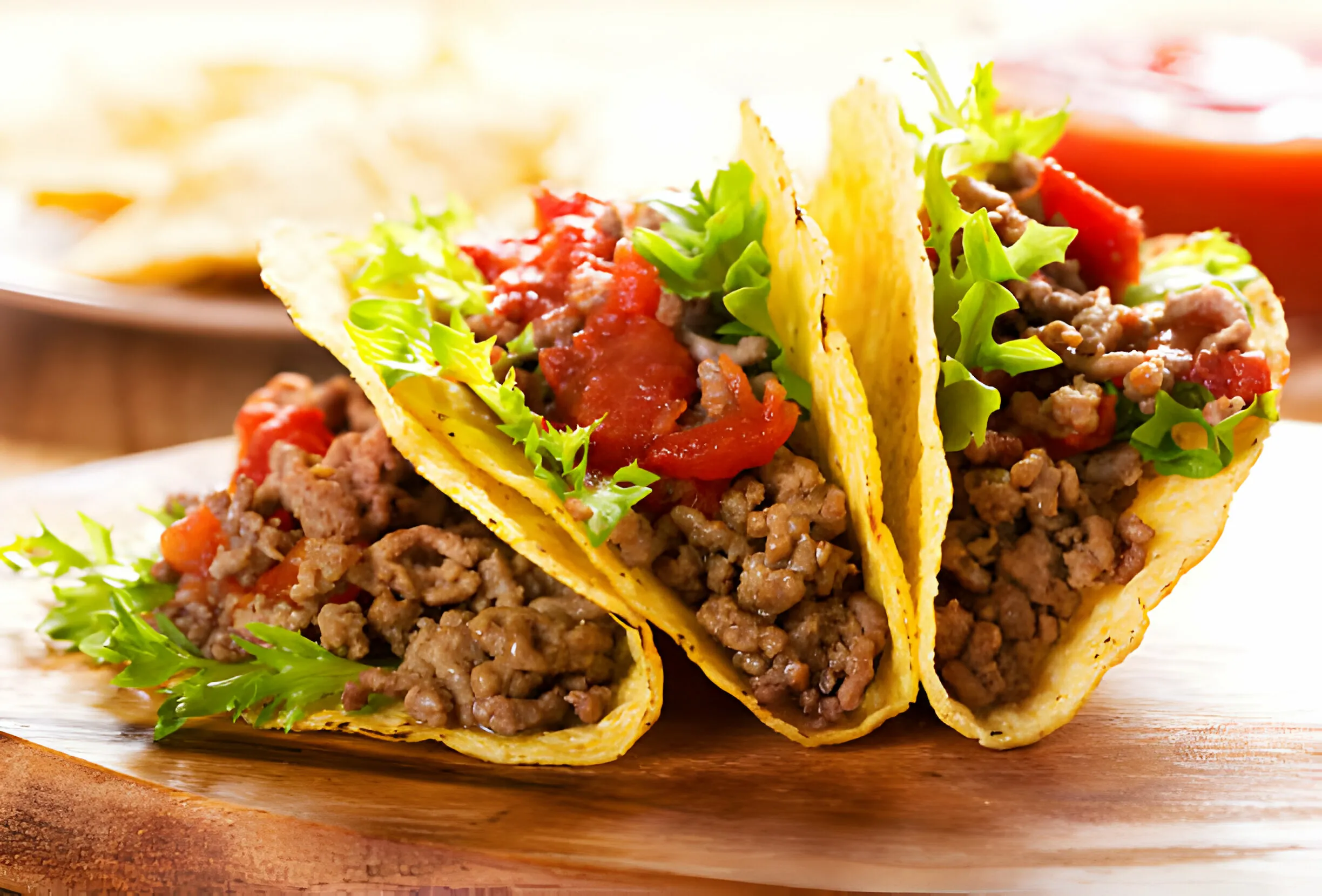Introduction to Taco Meat
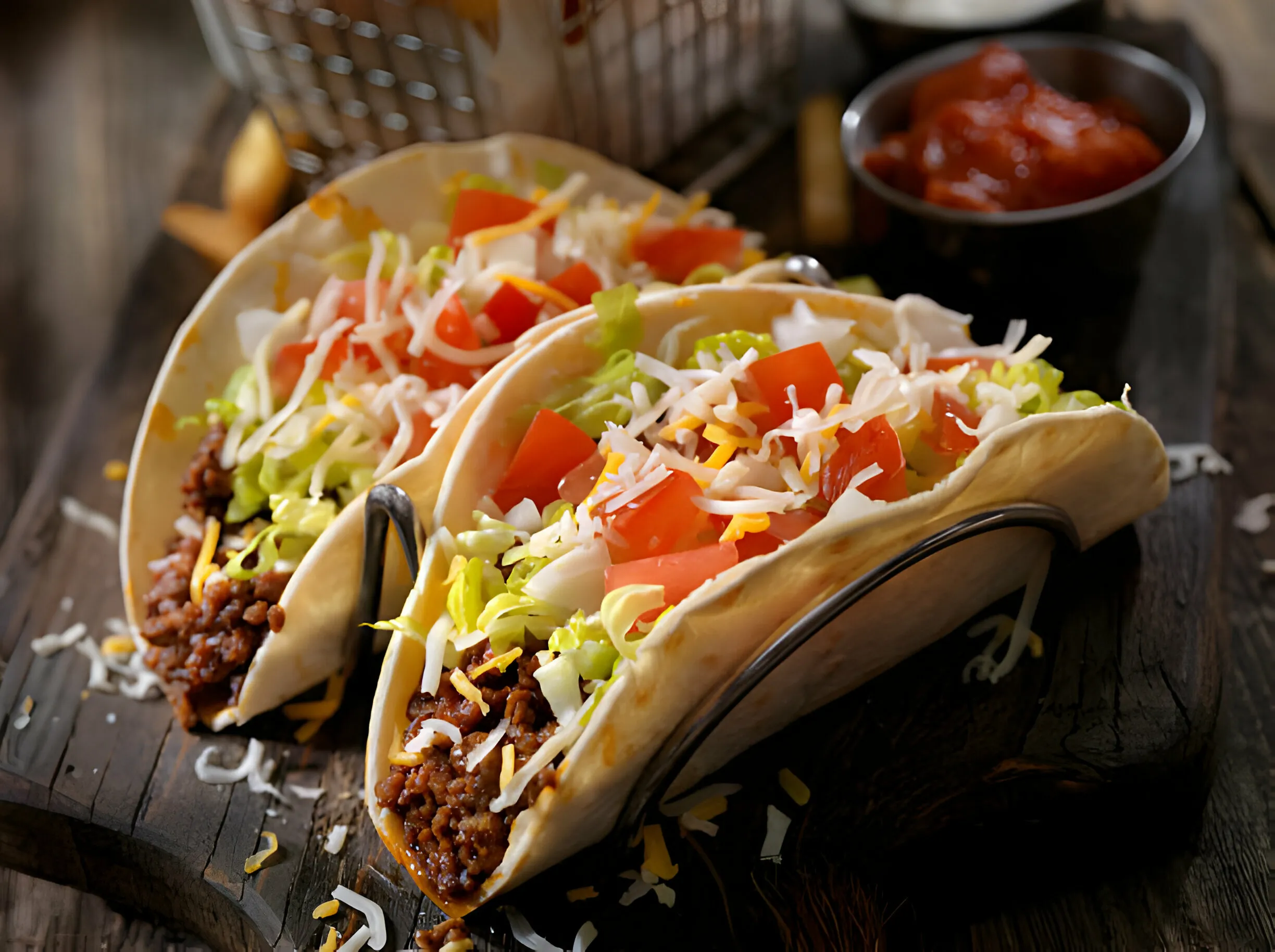
The Global Journey of Taco Meat: From Traditional Roots to International Fame
Taco meat, while deeply rooted in the rich tapestry of Mexican cuisine, has transcended its origins to become a beloved ingredient in kitchens around the globe. This section explores the journey of taco meat from its traditional roots to its current status as an international culinary sensation.
Historical Origins
The taco, and by extension taco meat, has a history that spans several centuries, originating from the indigenous peoples of Mexico. The concept of using a corn tortilla as a handheld vessel for various fillings was adopted and adapted by the Spanish colonizers, leading to the diverse array of tacos seen today. Initially, taco fillings varied greatly based on local ingredients and traditions, with taco meat evolving as livestock became more integral to Mexican agriculture and cuisine.
Regional Variations Within Mexico
Taco Meat Goes Global
As Mexican immigrants brought their culinary traditions to other countries, taco meat began to take on new forms, influenced by local tastes and available ingredients. In the United States, for instance, the introduction of ground beef as a common filling was a departure from traditional Mexican practices but became a staple in the American interpretation of tacos.
Modern Interpretations and Fusion Cuisine
Today, taco meat is celebrated not only in traditional dishes but also as a key component in fusion cuisine, illustrating the dynamic and adaptable nature of food. Chefs and home cooks alike experiment with taco meat, incorporating flavors and ingredients from various culinary traditions to create innovative and flavorful dishes. From Korean BBQ taco meat to Mediterranean-inspired lamb tacos, the possibilities are endless.
Cultural Impact
The evolution of taco meat from a simple, traditional filling to a versatile ingredient in global cuisine underscores the broader themes of migration, cultural exchange, and innovation in food. Tacos, and the meat that fills them, tell a story of adaptation and appreciation across cultures, inviting people everywhere to explore new flavors and culinary traditions.
Choosing the Right Meat
The choice of meat is crucial in determining the flavor and quality of your taco filling. While beef, particularly ground beef, is a traditional and popular choice, there are several options to consider based on personal preference and dietary requirements:
- Best Cuts of Beef for Taco Meat: For richly flavored and tender taco meat, opt for ground beef with a higher fat content, such as 80/20 (80% lean meat to 20% fat). This ensures juicy, flavorful tacos, with the fat adding depth to the meat’s taste.
- Alternative Meats for Tacos: Beyond beef, chicken, pork, and turkey offer delicious alternatives for taco meat. Chicken thighs, pork shoulder, or ground turkey can be seasoned and cooked similarly to beef for a lighter but equally tasty option.
- Non-Traditional Options: For those exploring beyond traditional meats, ground lamb or bison provides a unique flavor profile, enriching the taco experience with new and unexpected tastes.
Choosing the right meat involves balancing flavor preferences, dietary considerations, and cooking techniques. Each option brings its own set of characteristics to the table, allowing for customization and experimentation in your taco creations.
Essential Spices and Seasonings
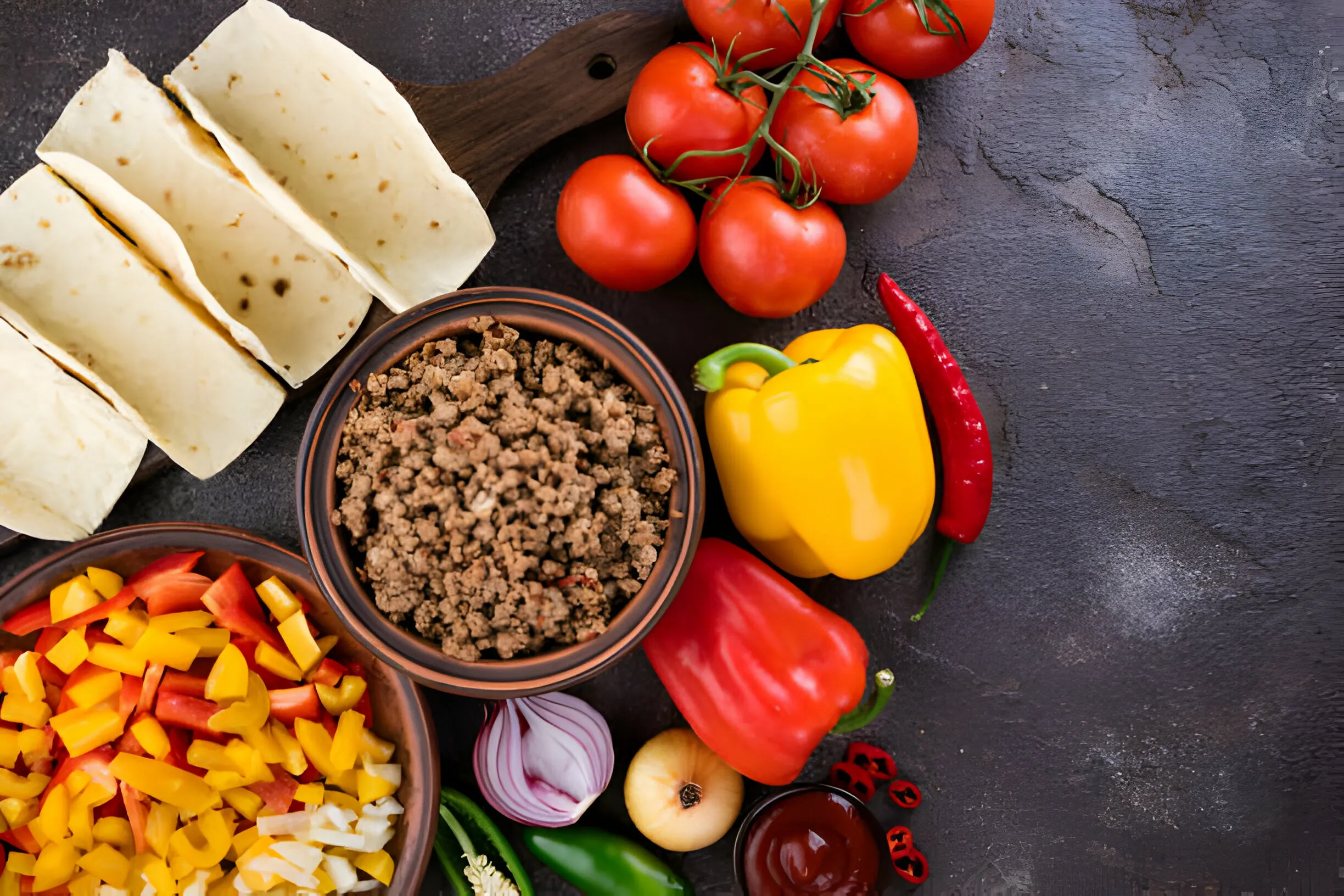
The secret to unforgettable taco meat lies in its seasoning. A blend of spices brings out the meat’s natural flavors and adds that signature taco zest. Here’s how to create your own homemade taco seasoning, along with a mention of how it compares to store-bought options:
- Homemade Taco Seasoning Recipe:
- 2 tablespoons chili powder
- 1 tablespoon ground cumin
- 2 teaspoons paprika (smoked or sweet)
- 1 teaspoon garlic powder
- 1 teaspoon onion powder
- 1/2 teaspoon dried oregano
- 1/2 teaspoon salt
- 1/4 teaspoon black pepper
- 1/4 teaspoon crushed red pepper flakes (optional for heat)
Combine these spices in a bowl, adjusting the heat and salt according to taste. This homemade blend not only allows you to control the ingredients and their quality but also avoids the added preservatives and fillers often found in store-bought options.
Preparing and Cooking Taco Meat
Taco Meat Recipe
Creating the perfect taco meat involves more than just seasoning; the cooking process is equally important. Follow these steps to ensure juicy, flavorful meat every time:
- Heat a Skillet: Warm a large skillet over medium heat. You can add a small amount of oil, but if you’re using a higher fat content beef, it may not be necessary.
- Brown the Meat: Add your choice of meat to the skillet, breaking it apart with a spoon. Cook until it’s evenly browned, ensuring any excess fat is drained if necessary.
- Add Seasoning: Sprinkle the homemade taco seasoning over the cooked meat. Pour in 1/2 cup of water and stir well, allowing the meat to simmer and the spices to distribute evenly.
- Simmer: Let the meat simmer for about 5-10 minutes until the water has reduced and the meat is coated with the spice mixture. This process helps deepen the flavors, making your taco meat rich and savory.
For those interested in exploring more beef-based recipes, consider enhancing your menu with dishes like a chuck roast for a hearty meal option.
Creative Variations of Taco Meat
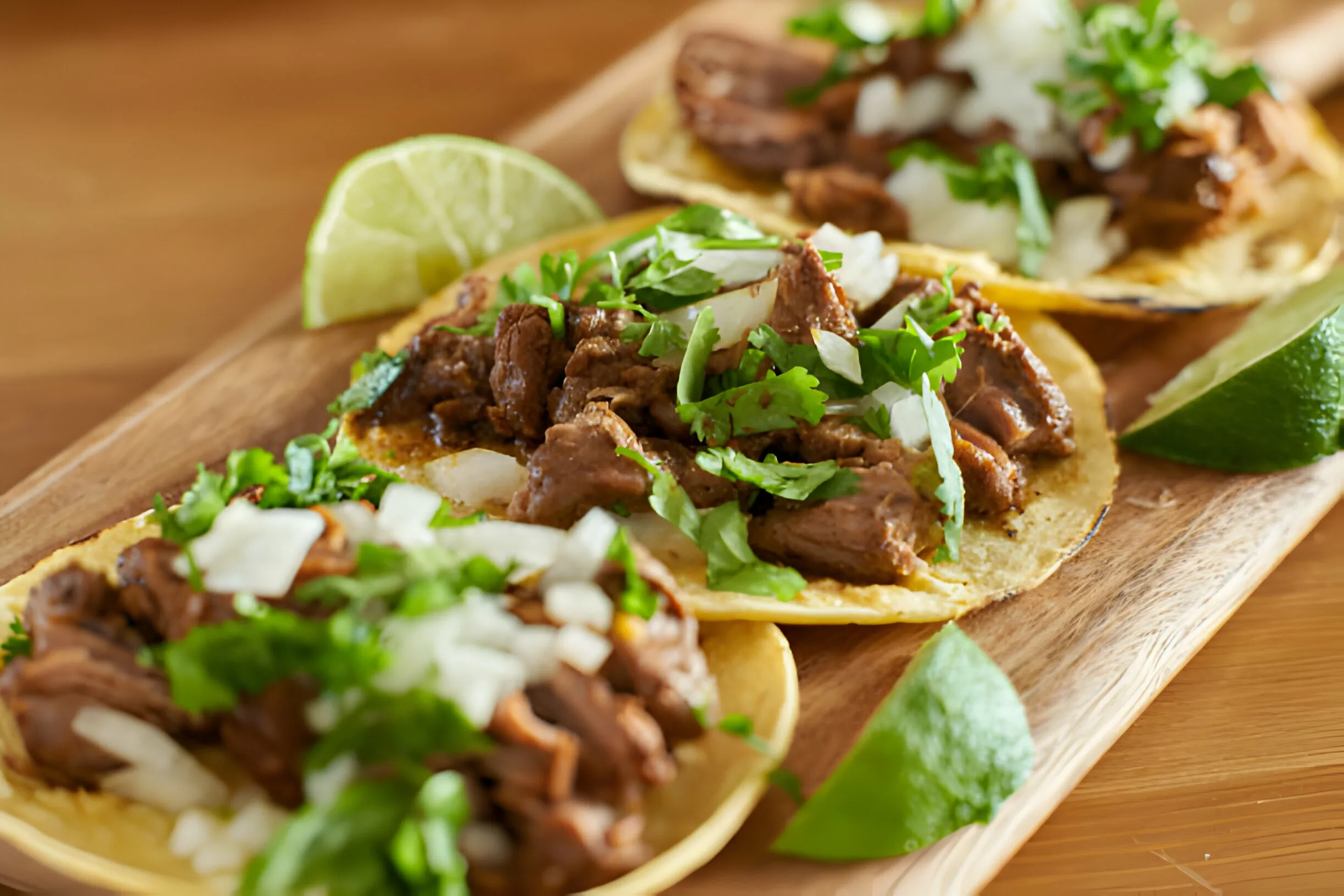
Diversity is the spice of life, and when it comes to taco meat, a little creativity can transform the ordinary into something extraordinary. Here are a few variations to spark your culinary imagination:
- Spicy Taco Meat with Chipotle Peppers: Add finely chopped chipotle peppers in adobo sauce to your ground meat for a smoky and spicy kick. This version is perfect for those who appreciate a little heat in their meals.
- Citrus-Marinated Chicken Taco Meat: For a lighter, zesty option, marinate chicken pieces in lime and orange juice with a dash of cumin before cooking. The citrus flavors will impart a fresh taste that complements the chicken beautifully.
- Vegetarian and Vegan Taco Meat Alternatives: Explore plant-based alternatives by using lentils, quinoa, or textured vegetable protein as the base. Season and cook similarly to traditional taco meat for a satisfying vegetarian or vegan option.
Each of these variations brings its own unique flavor profile to the table, allowing you to cater to various dietary preferences and taste buds.
Serving Suggestions and Pairings
The best taco is more than just its meat; it’s a harmonious blend of textures and flavors. Here’s how to build the perfect taco and choose sides that complement it:
- Building the Perfect Taco: Start with a warm, soft corn tortilla or a crispy taco shell. Fill with your choice of taco meat, then top with fresh lettuce, diced tomatoes, shredded cheese, and a dollop of sour cream or avocado for creaminess. Don’t forget a squeeze of lime for that extra zing!
- Side Dishes: Enhance your taco meal with side dishes like Mexican rice, refried beans, or a simple corn and black bean salad. These sides add depth and variety to your taco night.
- Beverage Pairings: Complement your meal with refreshing beverages. Traditional options include Mexican lager, margaritas, or for a non-alcoholic choice, agua fresca in flavors like hibiscus or lime.
By considering these serving suggestions and pairings, you can turn taco night into a comprehensive culinary experience that delights all the senses.
Storing and Reheating Taco Meat
To enjoy your taco meat beyond the initial meal, proper storage and reheating methods are key. Here’s how to keep your taco meat tasting fresh:
Storing Leftovers
- Cool Down: Allow taco meat to cool to room temperature before storing to prevent bacterial growth.
- Refrigerate or Freeze: Place the taco meat in an airtight container and refrigerate for up to three days. For longer storage, freeze the meat, where it can last up to three months. Be sure to label the container with the date to keep track of freshness.
Reheating
- Refrigerated Taco Meat: For best results, reheat taco meat on the stovetop over medium heat, adding a splash of water or broth to prevent drying out. Stir frequently until heated through.Frozen Taco Meat: Thaw overnight in the refrigerator before reheating. For a quick thaw, use the microwave’s defrost setting, then reheat as usual.Following these steps ensures your taco meat remains delicious and safe to eat, whether enjoyed the next day or pulled from the freezer for a future taco night.
Taco Meat Beyond Tacos
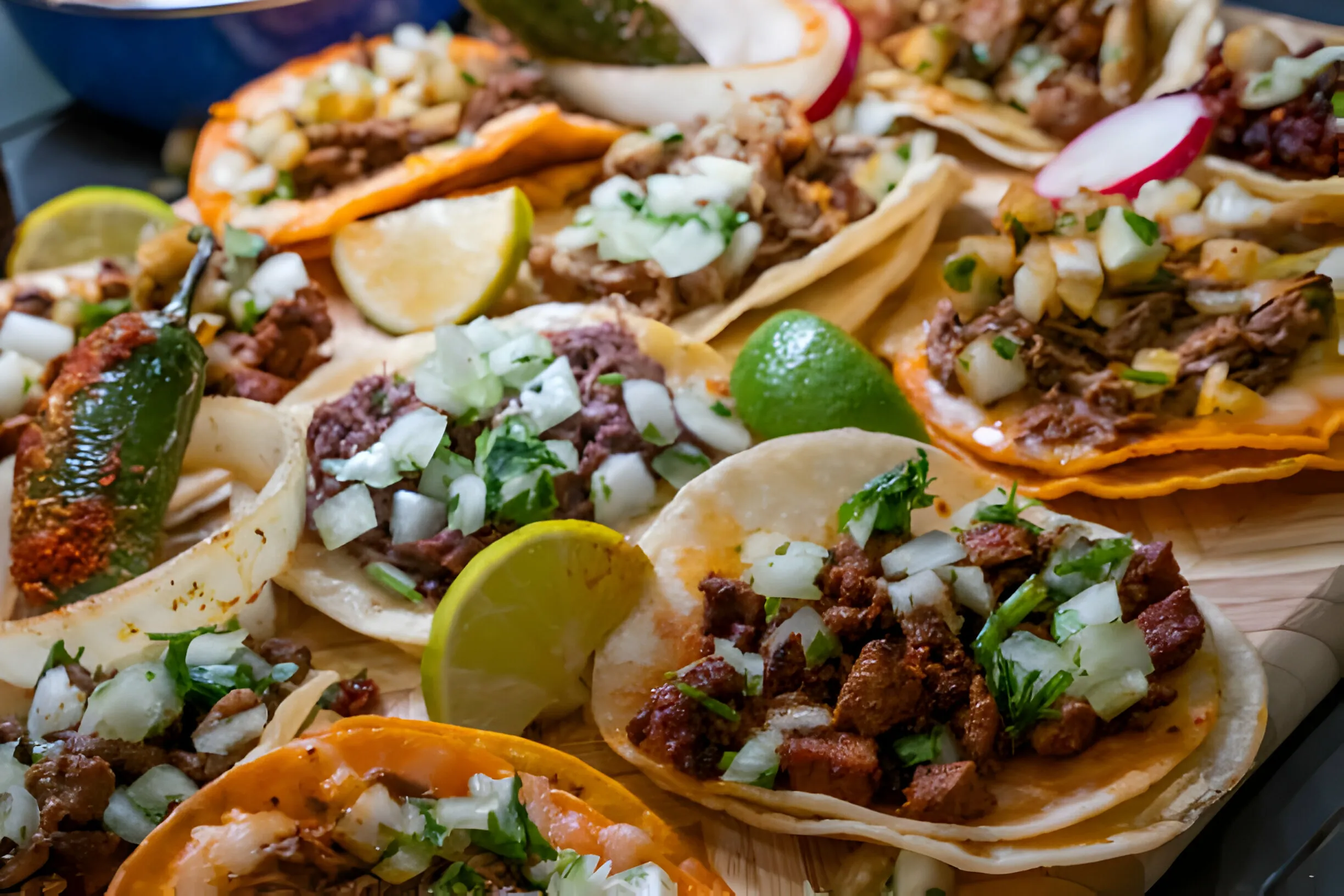
Taco meat’s rich flavor and versatility make it an excellent ingredient in a variety of dishes. Here are some creative ideas for using leftover taco meat:
- Casseroles: Layer taco meat with tortillas, cheese, beans, and salsa for a hearty taco casserole.
- Salads: Add taco meat to a bed of greens along with corn, black beans, avocado, and a zesty lime dressing for a taco salad.
- Dips: Mix taco meat with melted cheese and tomatoes for a warm taco dip, perfect for serving with tortilla chips.
- Stuffed Peppers: Fill bell peppers with a mixture of taco meat, rice, and cheese, then bake until the peppers are tender.
These innovative uses for taco meat not only extend its culinary reach but also provide delightful meal options that go beyond the traditional taco setup.
FAQs About Taco Meat
What’s the best cut of beef for taco meat?
Can I make taco meat without using beef?
Absolutely! Chicken, pork, turkey, and even plant-based proteins like lentils or textured vegetable protein (TVP) are great alternatives for making taco meat.
How can I store leftover taco meat?
Leftover taco meat can be stored in an airtight container in the refrigerator for up to three days or in the freezer for up to three months. Be sure to let it cool to room temperature before storing to prevent bacterial growth.
What can I do to make my taco meat more flavorful?
In addition to the traditional seasonings, consider adding fresh herbs, a splash of beer or broth, or a bit of tomato paste while cooking. These can deepen the flavor of your taco meat.
Is taco meat gluten-free?
How do I thicken taco meat?
If your taco meat is too liquidy, let it simmer uncovered on the stove for a few extra minutes to reduce the liquid. Another option is to mix in a small amount of cornstarch or flour dissolved in water.
Can taco meat be made in advance?
Yes, taco meat is a great make-ahead option. Prepare and cook your taco meat as usual, then cool and store it in the fridge or freezer. Reheat it gently on the stove or in the microwave when ready to serve.
How can I make my taco meat healthier?
Opt for leaner cuts of meat and consider adding vegetables like bell peppers or zucchini to the mix. You can also use homemade taco seasoning to control the amount of salt.
Conclusion
Call to Action
Now, we turn the kitchen over to you. Armed with these tips, techniques, and inspiration, we invite you to create your own taco meat masterpieces. Share your culinary adventures, successes, and even your learning moments with us at RecipeStrip.com. Let’s continue to build a community where passion for food, exploration, and shared experiences enriches our lives.
Thank you for joining us on this flavorful journey. Here’s to many more delicious adventures ahead. Happy cooking!

